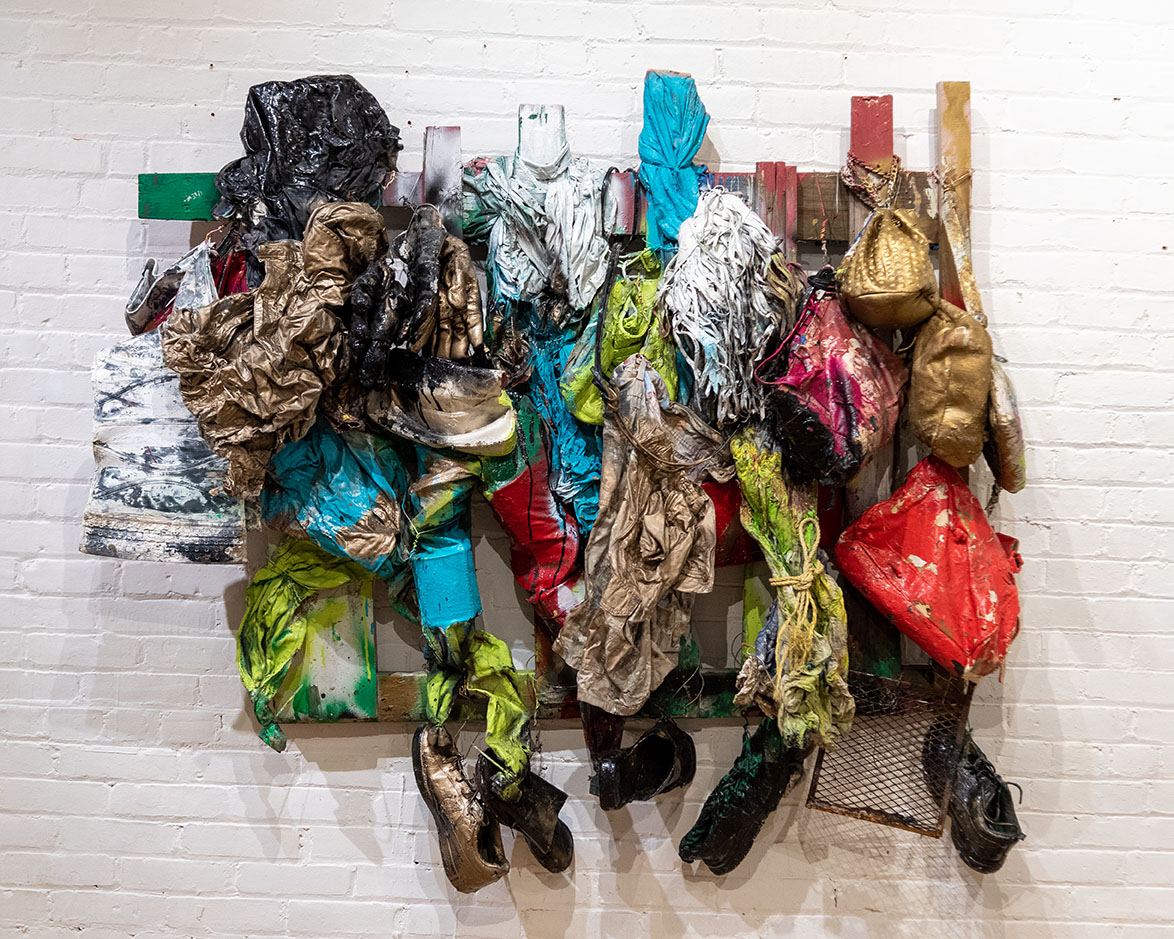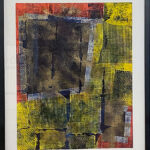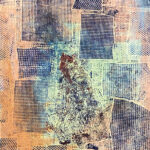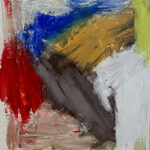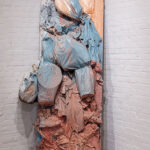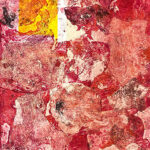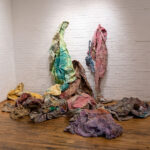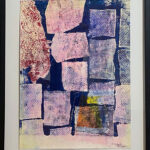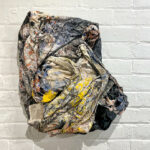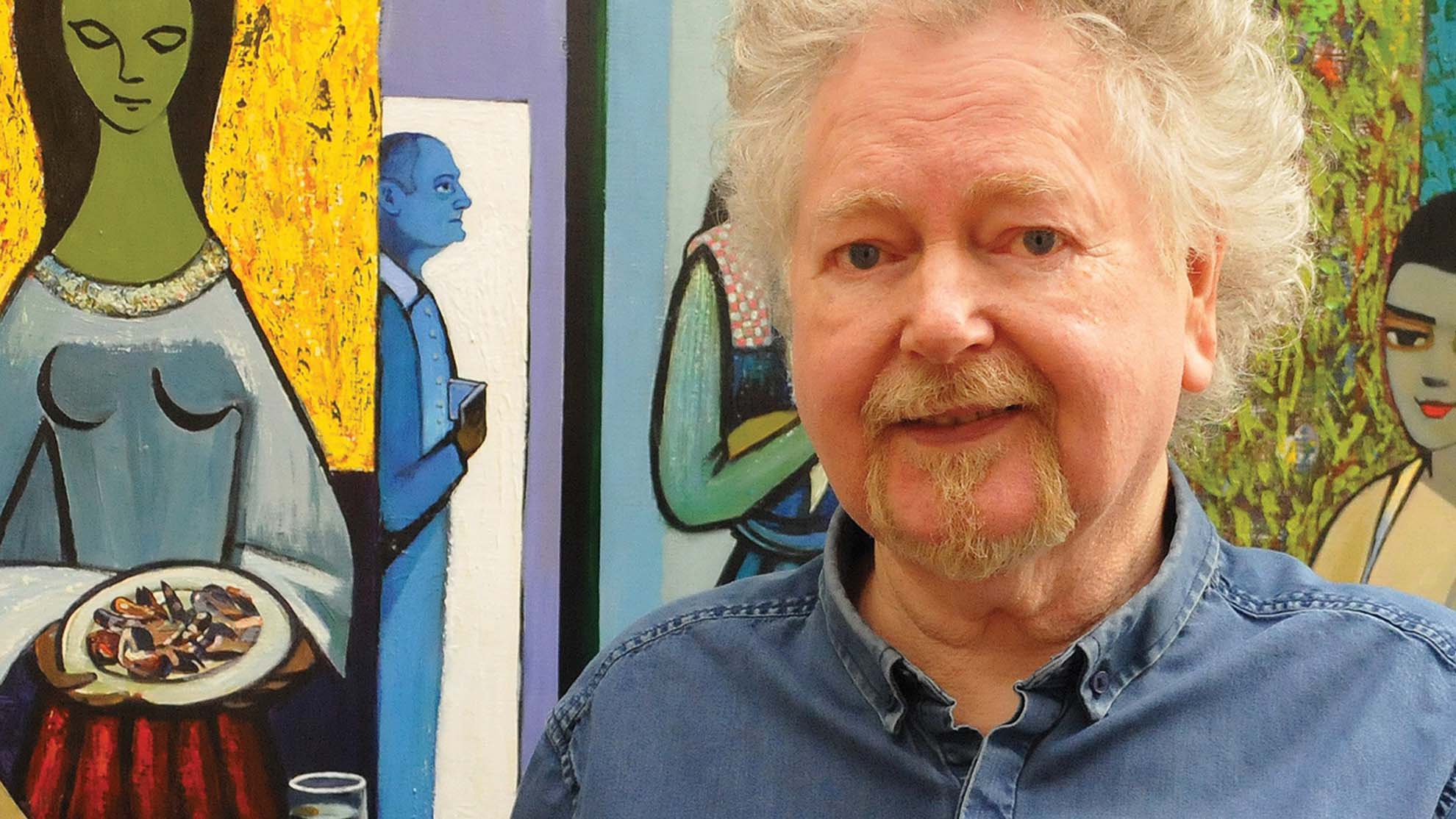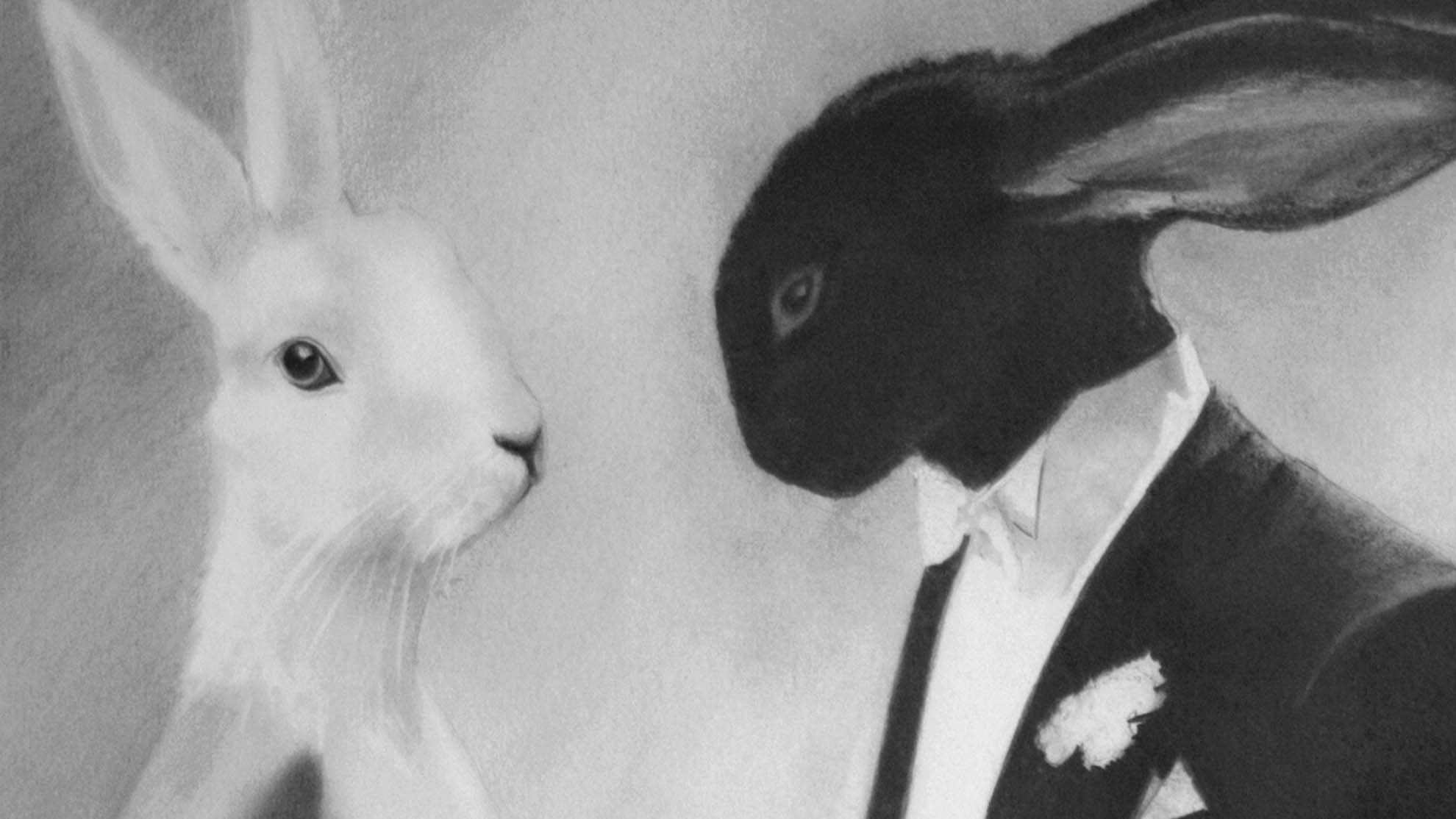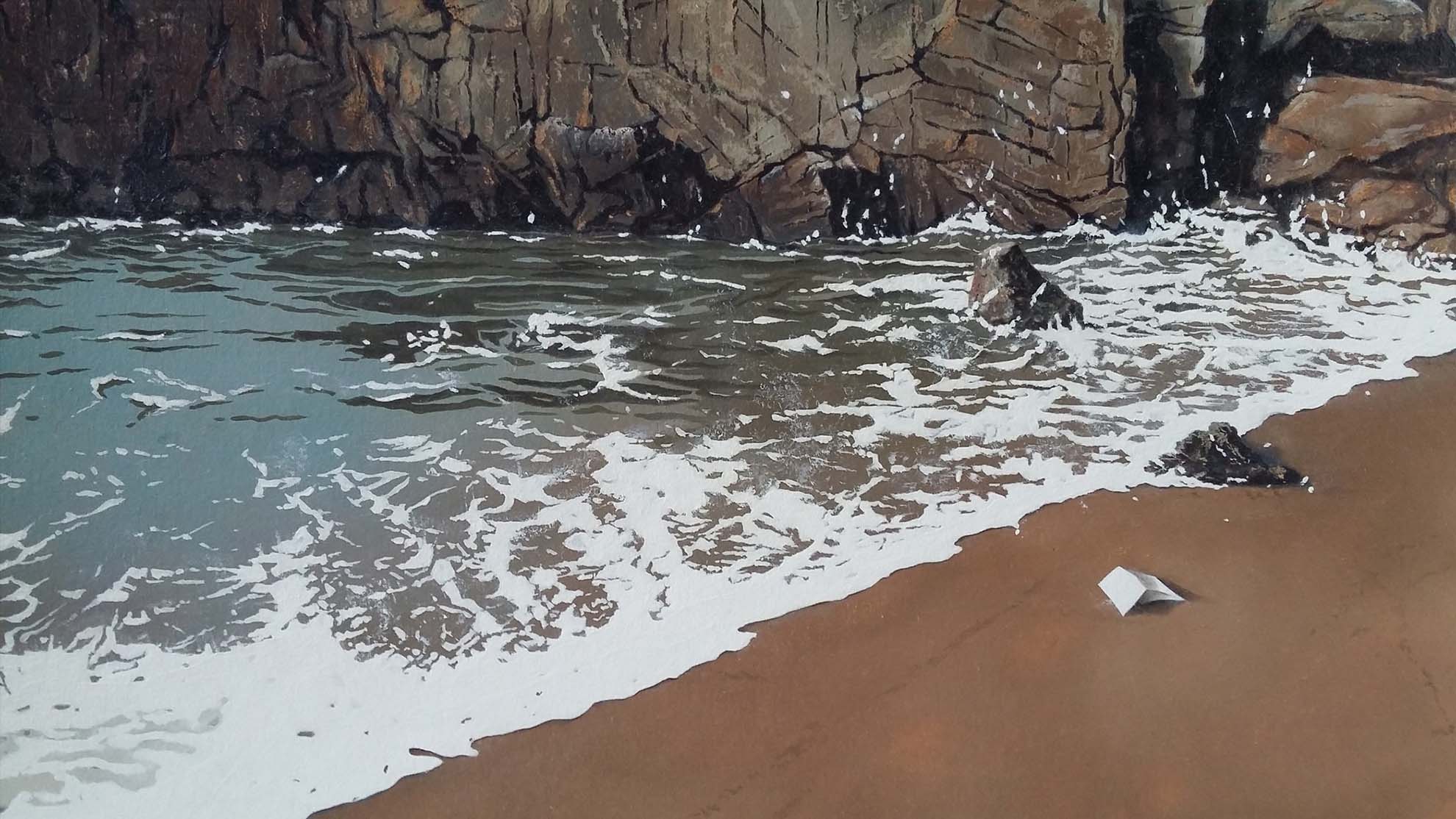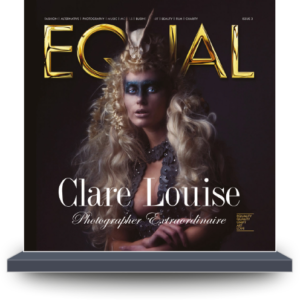Some sixty plus years ago in the northern US industrial town of Cleveland Ohio, an African American lad named Dale A. Goode started on a life-time’s journey of abstract artistic expression that during and despite many years of hardship and anonymity would continuously evolve and grow.
Dale began his journey in the sixties as a student when his talent was recognized by his art teachers John Brewton at Rawlings Junior High School and Elizabeth A Kent at East Technical High School who he credits with giving him guidance, direction and focus. Mrs. Kent told him that abstract art was one of his strong points and encouraged him to pursue it. She introduced him to materials like oil paints, linseed oil, paint thinner and poster paint, all of which were not being utilized by black artists at the time. The only thing she asked in return was that he not waste her materials.
Needless to say, he jumped in with both talent and passion and never looked back.
Developing his artistic skills and talents at Cleveland Institute of Art under the late George Schrader and then at Hiram College and Kent State University where he received bachelor’s and master’s degrees, Dale continued to develop and decided that he would strenuously avoid what he calls “the cookie cutter mode” that many painters employ. And as a result, whenever he has produced a series of work he has made sure there was only ever a very limited edition of them. His life as an abstract artist had begun.
What is it about us as human beings that makes us respond emotionally to something? It may be a group of colours or shapes or words, movements or sounds. Whatever it is, it creates in us a need to experience that emotion repeatedly and want to share it with others.
In many cases it may be something we cannot even fully explain or articulate, yet it evokes such a strong response and resonates so deeply within us that that it begs to be recognized, explored and reflected as something that we then define as artistic
expression.
Nowhere does this expression find a purer platform than in the area known as abstract art. This art does not attempt to represent or mirror an accurate likeness of any known reality but rather employs and combines various techniques in the form of shapes, materials, colours, sounds and space to express its idea.
How does one define abstract art? Often it takes meaning and sustenance from interacting with the emotions and minds of the viewer. A subliminal effect could be transmitted by seeing a series of dots or lines or colours on a crumpled canvas or a lump of wood or steel hanging from a bridge. The concept of abstract almost defies a common definition, much like the concept of beauty which is said to be in the eye of the beholder. Famous abstract artists include Picasso, Miro, Pollack, Kandinsky, Gabo, Mondrian, Malevich, de Kooning, Rothko, and O’Keefe.
What is amazing is that Dale survived, developed and prospered despite never having lived outside of Ohio, the state in which he was born. And despite the lack of support and frequent indifference from acknowledged art critics, combined with the lack of a flourishing local market for abstract works, he has continued to create and flourish with his own brand of nonconformist art.
In this respect he shares a similarity with some other well-known abstract artists who are now considered hidden gems and were only discovered by the general public later in life and some even posthumously who went on to become world famous like Hilma af Klint, Lyuba Sergeyevna Popova, and Richard Diebenkorn. Abstract art may encourage our brains to respond in a less restrictive and stereotypical manner than representational art, exploring new associations, activating alternative paths for emotions, and possibly forming new creative links in our brains. A study published in the Proceedings of the National Academy of Sciences suggested that viewing abstract art actually causes notable cognitive changes in the brain creating something called Aesthetic Cognitivism. Aesthetic Cognitivism is an idea born in philosophy which states that engagement with the arts not only moves us emotionally but also creates cognitive benefits.
This scientific conclusion would imply that an abstract painter like Dale Goode may well feed into deeper human emotions than a representative artist. In addition, his work might evoke a similar kind of cognitive development that researchers have concluded is more akin to music than to representational art. Although black abstract artists were not publicized very much when Dale started out in the early seventies, there were some black artists like Frank Bowling, Richard Mayhew, Alma Thomas and Sam Gilliam who were hard at work but had not yet gained international notoriety and success.
Along the way, Dale was deeply motivated by African American artist Sam Gilliam whom he met and visited in his Washington DC studio as well as other non-black abstract artists like Anselm Kiefer and Julian Schnabel.
Along the way, Dale was deeply motivated by African American artist Sam Gilliam whom he met and visited in his Washington DC studio as well as other non-black abstract artists like Anselm Kiefer and Julian Schnabel.
Generally Dale’s work is not pre-conceived but rather grows organically out of the processes he applies to materials that may include crushing industrialized construction bags with his car to create a certain texture or some other printmaking process that may involve him physically working with huge and cumbersome printing presses. He is also very concerned with the presentation, preservation and symmetry of his work. He credits Mindy Tousley of Artists Archives of the Western Reserve with showing him the importance of hanging artwork with precision, keeping in mind most people’s height and attention span.
According to Mindy, Dale is very disciplined and his work follows the rules of abstract art with respect to lines, form and colour. She is especially complimentary of his “gold bags” sculpture which is composed of a combination of discarded objects and clothing. “His historical use of gold paint over the entire sculpture is a statement about what is valuable and what is not in terms of both humans and objects and the comparison between socio- economically and racially divided classes of people” she explained.
Although he has covered many ideas in his work ranging from domestic violence to salvaging the future of the planet (using recycled materials in his sculptures) his work is always changing, challenging and daring and reflects a personal passion and a recognizable style of his own. Over the years some people suggested he change his style to something more representational, and in some cases even denigrated his work by saying it looked like something their grandchildren could do! But he has always resisted and persevered. Now after 50 years, his determination is paying dividends, both reputationally and financially. These days, Dale Goode’s art is among works that collectors are noticing and buying. At a recent showing at the Hedge Gallery in Cleveland he sold 15 paintings.
Hilary Gent the owner of Hedge Gallery who has successfully displayed and sold Dale’s work for the past three years says “ he is a multifaced talent with his painting, sculpture and printmaking but nevertheless, is still under- recognized.” Her game plan is to get him wider exposure by selling his works to larger organizations like corporations and hospitals. At seventy five years old, Dale is finally being acknowledged as a success, and has had a number of corporate commissions, gallery shows and critical acclaim as proof. After a fifty-year journey, the popularity of his most recent exhibitions show the public as well as the artistic community in Ohio what it is like to have a hidden treasure in their midst.

